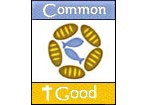What is the relationship between the Christian mission and artistic expression—including the Theatre? In a powerful vision set forth in his “Letter to Artists” John Paul II calls for “epiphanies” of beauty and encourages the flourishing of all the arts as a part of the fabric of a renewal of humanity.
To all who are passionately dedicated to the search for new “epiphanies” of beauty so that through their creative work as artists they may offer these gifts to the world (John Paul II).
God saw all that He had made, and it was very good (Genesis 1:31).
The relationship between art and the Christian mission in the world has been a mixed one over two millennia of Christian history. This is particularly true in the arena of artistic expression referred to as Theatre.
In the First Christian Millennium, the hostile environment into which the nascent Christian message and mission were sent, the theatre had devolved to a sad low. Why? Because the human race had “devolved” to an all time low, reveling in sexual debauchery and the loss of a sense of human dignity.
There is little doubt that the early Christian leaders discouraged participation in what was called the theatre. How could this be in a faith that proclaims the Incarnation of Jesus Christ as having touched and transformed the entirety of all human experience? It is because the theatre of that time reflected the debauchery of the culture in its degradation of the dignity of the human person.
The recent film “The Gladiator” captures some of the spirit of that age. Most dramatic expressions were considered indecent and certainly a threat to a life of virtue for Christians. Unfortunately, that hostility between the Christian Gospel (the only message capable of truly humanizing debased art) and the theatre continued into the third and fourth centuries when much theatrical presentation mocked the Christian rites and the Christian message.
However, the early Christian community had a wonderful sense for theatre and artistic expression. The fullness of liturgical expression and the very real and human works produced by Christian artists demonstrate this fact.
When we fast forward to the Second Christian millennium we discover that the first half of the Millennium witnessed a mature flowering of a Christian worldview. This resulted in extraordinary developments in art and Christian artistic participation. Both found favorable soil in a cultural climate created by the Renaissance.
In the east, the richness of an iconographic worldview flourished in all realms of artistic expression. In the west the flourishing of the arts in the middle ages corresponded to a flourishing in Western Christian artistic expression.
It did not last long.
In the sad aftermath of the so-called “Enlightenment” and the reactions in some segments of what has been called the Protestant reformation, this millennium marked another season of suspicion—if not hostility—in some circles. That is because in some Christian circles, the theatre became associated with an anthropology (a view of man) that saw nothing good in him.
Thus, the theatre, though for different reasons, was again suspect at best and discouraged in many Christian circles. It, like man, was corrupt. How sad and how limited a view of both man and the world created for him.
Now we begin a Third Christian Millennium and a playwright is seated in the Chair of Peter. In his “Letter To Artists” John Paul sets forth an inspiring and ambitious call for the participation of artists in the renewal of humanity through the flourishing of a new Christian humanism. With a prophetic clarity he speaks of the “artistic vocation” as one who has carried it in his own heart and incarnated it in his numerous plays.
Recognizing this mixed history of the relationship between art and Christian mission he writes of the modern era:
… in the modern era, alongside this Christian humanism which has continued to produce important works of culture and art, another kind of humanism, marked by the absence of God and often by opposition to god, has gradually asserted itself. Such an atmosphere has sometimes led to a separation of the world of art and the world of faith.
That separation has no place in a fully mature Catholic worldview. It flows from a poor anthropology, an inadequate understanding of the scope and implications of the paschal mystery, and all too often a missiology that views “the world” not as worthy of loving transformation by those who carry on the redemptive mission of Christ the artist, but a hostile environment from which the Christian and the Church must recoil. That is not good news. Perhaps after two millennia, we can now get the relationship right.
Only then we will truly see the “‘epiphanies’ of beauty” John Paul II has proclaimed.
Copyright © 2000 Deacon Keith A. Fournier, Third Millennium, LLC
Deacon Keith A. Fournier, a graduate of the Pontifical Pope John Paul II Institute For Studies On Marriage and Family, and the founder of the “Common Good Foundation” and the “Liberty, Life and Family Institute,” currently serves as Executive Editor For Catholic Affairs for Christianity.com. A Catholic Deacon, Fournier is also a constitutional lawyer and is the author of seven books, including A House United? Evangelicals and Catholics Together: A Winning Alliance For the 21st Century. A happily married man, Keith and his wife Laurine are the proud parents of five children.


